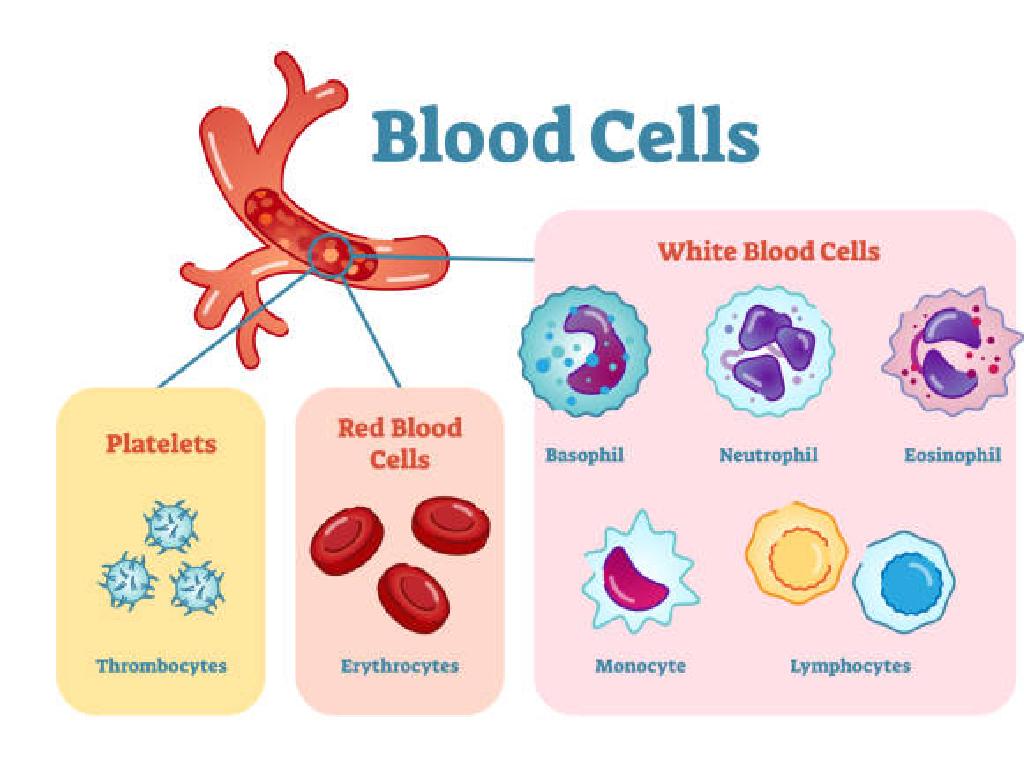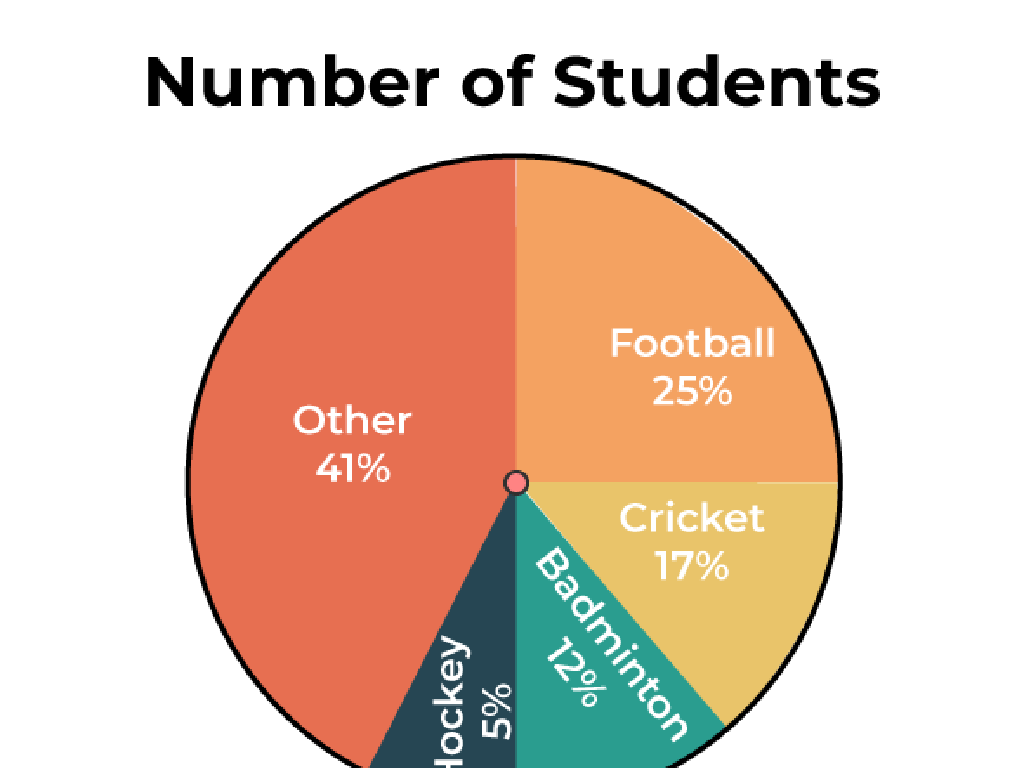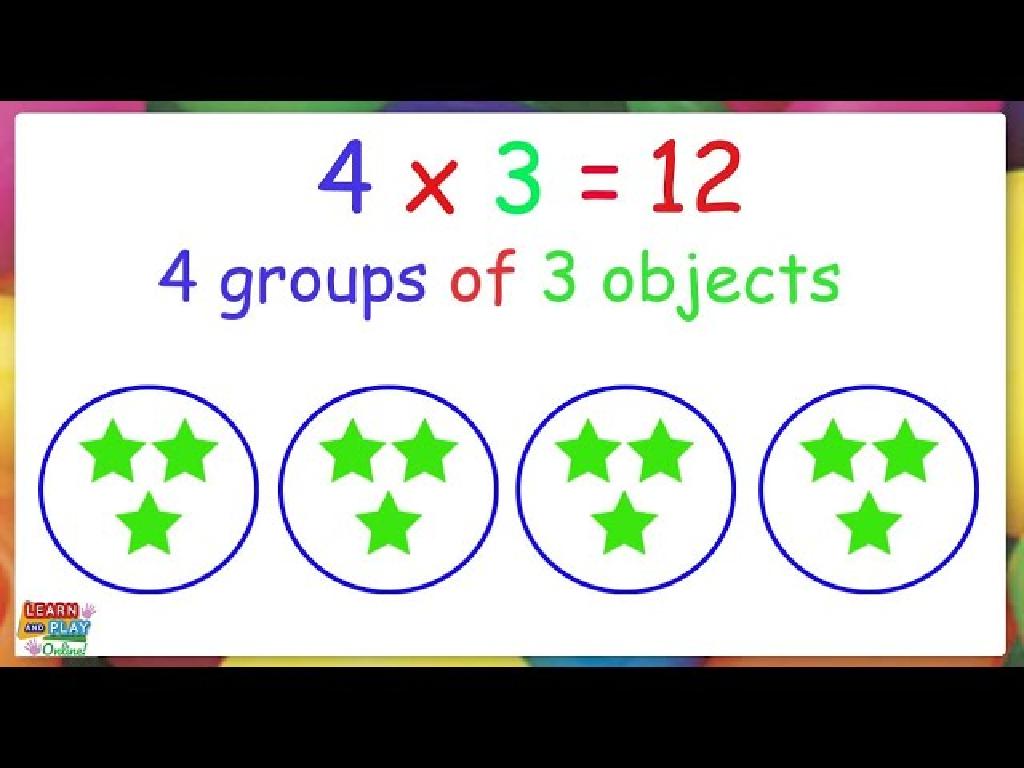Convert Mixed Numbers To Improper Fractions
Subject: Math
Grade: Fourth grade
Topic: Mixed Numbers
Please LOG IN to download the presentation. Access is available to registered users only.
View More Content
Today’s Adventure: Converting Mixed Numbers to Improper Fractions!
– What are mixed numbers?
– A whole number and a fraction combined, like 2 1/2
– Steps to convert to improper fractions
– Multiply whole number by denominator, add numerator, place over original denominator
– Real-life application of improper fractions
– Use in cooking, measuring, and when quantities aren’t whole
– Practice makes perfect!
|
Begin the lesson by explaining what mixed numbers are, using examples like 2 1/2 to illustrate. Then, demonstrate the steps to convert a mixed number to an improper fraction: multiply the whole number by the denominator, add the numerator, and write this sum over the original denominator. Emphasize the importance of this skill in real-life situations such as cooking or measuring, where precise quantities are needed and often not whole numbers. Encourage students to practice with examples and provide a variety of problems to solve. This will help solidify their understanding and ability to convert mixed numbers to improper fractions confidently.
Understanding Mixed Numbers
– Define mixed numbers
– A number with a whole part and a fraction part, like 2 1/2
– Mixed numbers in daily life
– Examples: 1 1/2 pizzas, 3 3/4 hours of play
– Identify whole and fraction parts
– Whole number: before the fraction, Fraction part: after the whole number
– Practice with examples
|
Introduce the concept of mixed numbers by defining them as the sum of a whole number and a fraction. Provide relatable examples such as portions of pizza or durations of time to illustrate mixed numbers in contexts familiar to fourth graders. Clarify how to distinguish between the whole number and the fraction part of a mixed number. For instance, in 2 1/2, ‘2’ is the whole number and ‘1/2’ is the fraction part. Engage students with simple examples to identify and write down the whole and fraction parts from mixed numbers. This foundational understanding is crucial before they learn to convert mixed numbers to improper fractions.
Understanding Improper Fractions
– Define an improper fraction
– A fraction where the numerator is greater than or equal to the denominator, e.g., 7/4
– Compare with mixed numbers
– Mixed numbers combine whole numbers and fractions, e.g., 1 3/4
– View examples of improper fractions
– Examples: 9/5, 11/6, and 7/4
– Practice converting mixed numbers
|
This slide introduces students to improper fractions and how they differ from mixed numbers. Begin by defining an improper fraction as one where the numerator (the top number) is larger than or equal to the denominator (the bottom number). Contrast this with mixed numbers, which have both a whole number and a fraction part. Provide clear examples of improper fractions to illustrate the concept. Then, guide students through the process of converting mixed numbers to improper fractions, ensuring they understand each step. Encourage students to practice with additional examples and to ask questions if they’re unsure about the conversion process.
Converting Mixed Numbers to Improper Fractions
– Multiply whole number by denominator
– Add result to the numerator
– Sum as new numerator over denominator
– Example: Convert 2 3/4 to an improper fraction
– 2 * 4 = 8, 8 + 3 = 11, so 2 3/4 becomes 11/4
|
This slide outlines the steps to convert mixed numbers to improper fractions, which is a key skill in understanding fractions for fourth-grade students. Start by multiplying the whole number part of the mixed number by the denominator of the fractional part. Next, add this result to the numerator of the fractional part. The sum of this calculation becomes the new numerator, which is placed over the original denominator to form the improper fraction. For example, to convert 2 3/4 to an improper fraction, multiply 2 (the whole number) by 4 (the denominator), which equals 8. Then add 3 (the numerator), resulting in 11. Therefore, 2 3/4 is converted to 11/4. Encourage students to practice this method with various mixed numbers to become comfortable with the process.
Let’s Practice Together: Converting Mixed Numbers
– Convert 2 3/4 to an improper fraction
– Multiply the whole number by the denominator and add the numerator: 2*4+3
– Convert 5 1/2 to an improper fraction
– Multiply 5 by the denominator 2, then add the numerator 1: 5*2+1
– Group practice with examples
– Work together to convert mixed numbers, helping each other
– Understand conversion steps
– Learn the method: Whole number*denominator + numerator
|
This slide is designed for a collaborative classroom activity where students will practice converting mixed numbers to improper fractions. Start with two clear examples. For 2 3/4, multiply the whole number 2 by the denominator 4, then add the numerator 3 to get 11/4. For 5 1/2, multiply the whole number 5 by the denominator 2, then add the numerator 1 to get 11/2. After demonstrating these examples, facilitate group practice where students can try similar problems and guide each other through the process. Emphasize the conversion steps and ensure that students understand the reasoning behind each step. Provide additional examples if time allows and encourage students to explain the process to their peers to reinforce their understanding.
The Importance of Improper Fractions
– Cooking with fractions
– Use 1 1/2 cups of sugar: 1 whole cup + 1/2 cup
– Measuring distances
– A race is 2 3/4 miles long: How many quarters?
– Shopping and fractions
– Buying 3 1/2 pounds of apples: How many half pounds?
– Why learn this?
|
Understanding improper fractions is essential in everyday life. When cooking, recipes often require mixed number measurements, and knowing how to convert them to improper fractions can make measuring ingredients easier. In measuring distances, such as in races or road trips, distances are often given in mixed numbers, and converting them can simplify calculations. Shopping involves dealing with mixed numbers when buying items sold by weight or length. Teaching students to convert mixed numbers to improper fractions equips them with practical skills for these common scenarios. Encourage students to think of other areas where they encounter mixed numbers and to practice converting them to improper fractions.
Class Activity: Fraction Scavenger Hunt
– Find classroom objects as mixed numbers
– Convert mixed numbers to improper fractions
– Multiply the whole number by the denominator, add the numerator
– Write down your improper fractions
– Share your findings with the class
|
This interactive activity is designed to help students apply their knowledge of converting mixed numbers to improper fractions in a fun and engaging way. Students will search the classroom for objects that can represent mixed numbers, such as a group of pencils where some are whole and some are broken into parts. Once they identify an object, they should write it down as a mixed number. Then, they will convert that mixed number to an improper fraction using the method taught in class. After everyone has found and converted at least one mixed number, students will come together to share their findings, allowing them to see a variety of examples and ensuring that they understand the conversion process. Possible variations of the activity could include working in pairs, setting a time limit, or finding objects that represent a specific range of fractions.
Wrapping Up: Mixed Numbers to Improper Fractions
– Review of converting mixed numbers
– Practice makes perfect
– Homework: 10 conversion problems
– Convert 10 mixed numbers to improper fractions as practice.
– Share your solutions next class
– Be ready to present your answers and explain your methods.
|
As we conclude today’s lesson on converting mixed numbers to improper fractions, it’s crucial to emphasize the importance of practice in mastering this concept. For homework, students are assigned to convert 10 mixed numbers into improper fractions. This will help reinforce their understanding and provide an opportunity to apply what they’ve learned. In the next class, students should be prepared to share their solutions and explain the process they used to arrive at their answers. This will not only help them retain the information but also build their confidence in explaining mathematical concepts.






